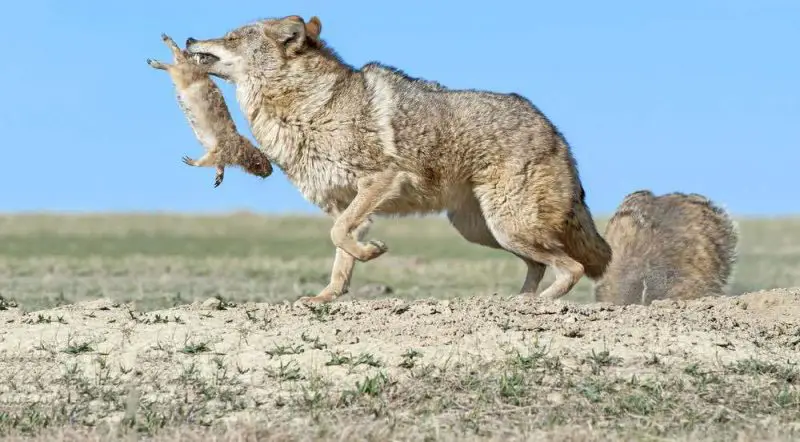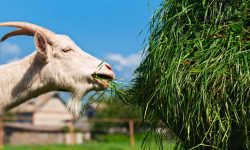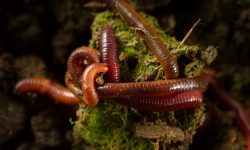Coyotes are among the most adaptable predators in North America. From dense forests and dry deserts to bustling cities, these clever canines have learned to survive — and thrive — almost anywhere. But what exactly fuels their survival skills?
Unlike wolves, coyotes are opportunistic omnivores, meaning they eat whatever is available, whether it’s fresh meat, carrion, fruits, or even insects. Their diet changes with the seasons and their surroundings, allowing them to adapt to both wilderness and urban life with remarkable success.
In this guide, we’ll explore 20 foods coyotes love the most, breaking down how each item contributes to their strength, intelligence, and ability to survive in nearly every environment on the continent.
Understanding the Coyote Diet

Coyotes: Nature’s Ultimate Opportunists
Coyotes eat an incredibly diverse range of foods. They are primarily carnivorous, feeding on small mammals, but they also eat fruits, vegetables, insects, and occasionally human leftovers. This omnivorous diet is what makes them so adaptable to changing landscapes.
Their feeding habits vary by habitat — desert coyotes might hunt rodents and reptiles, while forest coyotes focus on rabbits, deer, and birds. In urban areas, they often scavenge pet food or garbage, showing how flexible and intelligent these animals are.
Hunting and Scavenging Behavior
Coyotes are skilled hunters, often working alone or in pairs to catch prey. They rely on stealth, sharp vision, and incredible hearing to locate movement in grass or snow. Their speed and endurance allow them to chase down small animals with ease.
They also scavenge carcasses left by larger predators like wolves or mountain lions, wasting nothing. In this way, coyotes play an important ecological role in cleaning up decaying remains and maintaining environmental balance.
Seasonal Diet Shifts
In spring and summer, coyotes eat mostly rodents, rabbits, insects, and young birds. During fall, they turn to fruits, nuts, and vegetables that ripen in abundance. In winter, when plant foods are scarce, they rely heavily on mammals and carrion.
This seasonal flexibility allows coyotes to thrive in environments that would challenge less adaptable predators.
20 Foods Coyotes Love the Most
1. Rabbits
Rabbits are one of the most common prey items for coyotes and serve as a vital food source throughout much of North America. They are rich in lean protein and moisture, making them both nutritious and hydrating. Coyotes rely on stealth and precision to ambush rabbits, often using tall grass or brush as cover before pouncing swiftly.
This meal provides the energy needed for hunting, traveling long distances, and caring for pups. Rabbits also help coyotes sustain their metabolic needs during breeding and molting seasons. Because rabbits reproduce quickly, they remain a consistent food source year-round.
In natural ecosystems, coyotes help regulate rabbit populations, preventing overgrazing and promoting healthier vegetation growth across grasslands and forests.
2. Rodents
Rodents such as mice, rats, and voles form a significant portion of the coyote’s diet. They’re small, abundant, and easy to catch, providing a steady protein supply in almost every environment. Coyotes detect their movements using acute hearing and can pounce with incredible accuracy, even through snow or dense grass.
These small mammals are essential for maintaining energy, especially during colder months when larger prey becomes scarce. Coyotes often consume multiple rodents in a single night of foraging.
By preying on rodents, coyotes play an important ecological role, controlling pest populations that might otherwise damage crops or spread disease.
3. Deer
Deer provide one of the richest food sources for coyotes, though they are not always easy prey. Coyotes typically target fawns or weakened adults, relying on teamwork and endurance to succeed. They may also scavenge from deer carcasses left behind by larger predators like mountain lions.
Deer meat offers high-quality protein, fat, and essential nutrients that sustain coyotes through harsh winters. The bones, fur, and organs are all consumed, ensuring nothing goes to waste.
In forest ecosystems, this predation helps regulate deer numbers and maintains ecological balance, preventing overbrowsing of young vegetation.
4. Squirrels
Squirrels are another common food source, particularly in wooded areas and suburban parks. They are agile and quick, making them a challenge for coyotes to catch, but the reward is a nutritious, high-protein meal. Coyotes use patience and stealth to ambush squirrels, often waiting beneath trees or near feeding areas.
Squirrels provide essential fats and calories, especially during colder months when energy demands are higher. Their availability throughout the year makes them a dependable source of nourishment.
In suburban environments, squirrels often serve as an easy and natural prey alternative for coyotes adapting to human presence.
5. Birds
Coyotes occasionally hunt birds, especially ground-nesting species like quail, pheasants, and ducks. They may also scavenge dead birds or consume eggs when available. Birds provide valuable protein and fat, supporting the coyote’s muscle development and energy needs.
During nesting season, coyotes raid nests for eggs and fledglings, taking advantage of these easy meals. Feathers often mark the site of their feeding.
Although not a primary food source, birds add important dietary variety and help coyotes meet nutritional needs when small mammals are scarce.
6. Insects
Insects are a surprisingly vital component of a coyote’s diet, especially in summer. Grasshoppers, crickets, beetles, and caterpillars are packed with protein and are easy to find in open fields. Coyotes dig into the soil or scratch through debris to uncover these small creatures.
Eating insects provides quick energy without the effort required to hunt larger prey. This behavior also reflects the coyote’s adaptability and willingness to exploit any available food source.
In dry or desert environments, insects can make up a significant part of the coyote’s nutrition, helping them survive periods of drought.
7. Frogs and Toads
Coyotes living near wetlands and ponds often include frogs and toads in their diet. Amphibians are a valuable source of protein, calcium, and moisture, especially during warm, rainy seasons. Coyotes catch them along shorelines or shallow pools, usually in the evening or early morning.
These slippery creatures require quick reflexes and sharp eyesight to catch. Their soft texture makes them easy to digest, especially for younger coyotes.
Although seasonal, frogs and toads add variety and hydration to the coyote’s diet, demonstrating their versatility as omnivores.
8. Fish
Fish provide a nutrient-dense meal full of protein and healthy fats. Coyotes catch fish by wading into shallow water or scavenging along riverbanks for stranded or discarded fish. They may also take advantage of fishing areas frequented by humans.
Fish-based meals help coyotes maintain glossy coats, healthy muscles, and sufficient energy for daily activity. These aquatic hunts are more common in regions with rivers, lakes, or coastal areas.
Their ability to exploit water-based food sources highlights just how resourceful and intelligent coyotes truly are.
9. Carrion
Carrion, or dead animal remains, is an important fallback food source. Coyotes readily consume roadkill or carcasses left by larger predators like wolves or bears. This behavior conserves energy since scavenging requires less effort than hunting.
Carrion provides crucial calories during lean months and helps coyotes survive the winter when live prey is scarce. They eat nearly everything — meat, bones, and organs alike.
By cleaning up carcasses, coyotes help reduce disease spread and recycle nutrients back into the ecosystem.
10. Fruits
Fruits are a key part of a coyote’s diet, especially in late summer and fall. Apples, pears, berries, and persimmons provide natural sugars, vitamins, and hydration.
These sweet foods help coyotes build fat reserves for colder months. They often forage in orchards, forests, and fields for fallen fruit.
In the process, coyotes disperse seeds through their droppings, helping replant wild fruit trees and shrubs across landscapes.
11. Nuts
Coyotes occasionally eat nuts such as acorns, chestnuts, and walnuts. These high-fat foods provide energy and nutrients when other resources are low.
Though coyotes can’t crack shells as efficiently as rodents, they consume fallen or partially open nuts found under trees.
Nuts are especially valuable during autumn, when coyotes need extra energy to prepare for winter and the scarcity of fresh prey.
12. Vegetables
Coyotes sometimes raid fields for vegetables like corn, pumpkins, and carrots. These provide carbohydrates and hydration but are not a primary food.
Their willingness to eat farm produce demonstrates how adaptable they are to human-modified environments. Coyotes may nibble on crops while hunting rodents or insects nearby.
While occasional vegetable consumption poses little issue, it’s another reminder of how easily they blend into agricultural ecosystems.
13. Reptiles
Small reptiles like lizards and snakes are part of the coyote’s diet in warmer regions. They provide lean protein and minerals while adding variety to the menu.
Coyotes use quick bites to immobilize reptiles, shaking them to kill before swallowing. This efficient hunting style minimizes energy use.
Reptiles help supplement the diet during dry seasons, showcasing the coyote’s adaptability to desert and semi-arid environments.
14. Domestic Animals (Occasionally)
In rural areas, coyotes may prey on small livestock such as chickens, goats, or outdoor cats. This typically happens when natural prey populations decline.
They prefer easy targets and often strike at night when animals are unsupervised. Farmers sometimes report missing poultry or small pets during these periods.
While such incidents can cause conflict, this behavior reflects survival instincts rather than aggression — coyotes take advantage of accessible food sources like any opportunistic predator.
15. Berries
Berries like blackberries, blueberries, and mulberries are highly nutritious and rich in antioxidants. Coyotes feed on them during summer and early fall when they ripen in abundance.
These small fruits provide hydration, natural sugars, and fiber, helping maintain digestive health.
By spreading berry seeds in their droppings, coyotes indirectly help forests and meadows regenerate. This mutual relationship benefits both wildlife and plant diversity.
16. Grass and Herbs
Although primarily carnivorous, coyotes sometimes eat grass and herbs to aid digestion. Chewing grass helps clear hair, bones, or other indigestible material from their stomachs.
This self-medicating behavior also helps soothe mild gastrointestinal discomfort. Coyotes instinctively know which plants to eat for this purpose.
Eating small amounts of grass shows their biological intelligence and ability to regulate their own digestive health naturally.
17. Crabs and Shellfish
Coastal coyotes feed on crabs, clams, and shellfish during low tides. These protein-rich foods are abundant and easy to find along beaches.
Coyotes dig through wet sand or flip rocks to uncover hidden crabs and shellfish, using their keen noses to locate them.
This coastal foraging demonstrates their adaptability — turning to marine life when inland prey is scarce or when living near seaside habitats.
18. Pet Food and Garbage
In urban areas, coyotes often scavenge human leftovers such as pet food, compost, and trash. They quickly learn where easy meals are found, especially at night.
Pet kibble, meat scraps, and discarded fast food all provide calories, though not ideal nutrition. This behavior allows them to survive even in heavily populated areas.
However, feeding on human waste can lead to dependency and conflict, making it essential for people to secure trash bins and feed pets indoors.
19. Invertebrates (Worms and Grubs)
Coyotes dig into soil to find worms, grubs, and beetle larvae, especially after rainfall. These invertebrates offer protein and hydration in easily digestible form.
Younger coyotes often depend on this food as they learn to hunt larger prey. It’s also a valuable food source during transitional seasons when insects are abundant.
Despite their small size, these creatures contribute significantly to a coyote’s nutritional balance.
20. Watermelons and Other Melons
Coyotes are known to raid gardens and farms for melons like watermelons, cantaloupes, and honeydews. The juicy flesh provides hydration and natural sugar, particularly in hot, dry climates.
They often bite through the rind to access the sweet interior, leaving distinctive teeth marks behind. This fruit offers both water and quick energy when prey is scarce.
Farmers sometimes view this as nuisance behavior, but for coyotes, it’s simply another way to adapt and survive in challenging environments.
Frequently Asked Questions (FAQs)
Are coyotes carnivores or omnivores?
Coyotes are omnivores. They primarily eat meat but also consume fruits, vegetables, and other plant matter when available.
Do coyotes eat pets?
Occasionally, yes. Coyotes may attack small pets if left outdoors unsupervised, especially at night. Keeping pets inside and securing yards helps prevent encounters.
What do coyotes eat in cities?
Urban coyotes eat rodents, fruit, garbage, and pet food. Their ability to live near humans shows how adaptable they are to changing environments.
What do coyotes eat in winter?
During winter, coyotes rely mainly on mammals such as rabbits, rodents, and carrion. Stored fat and scavenging help them survive harsh conditions.
How do coyotes help the ecosystem?
Coyotes control rodent and rabbit populations, clean up carcasses, and spread seeds through their droppings — helping maintain ecological balance.
Conclusion
Coyotes are nature’s ultimate survivors — smart, resourceful, and endlessly adaptable. Their diet ranges from small mammals and reptiles to fruits and carrion, reflecting their ability to thrive in deserts, forests, mountains, and even city suburbs.
Every food they eat plays a role in maintaining their energy, balance, and place in the ecosystem. From hunting rabbits to scavenging berries, coyotes embody the flexibility that defines nature’s most successful predators.
Understanding what coyotes eat not only reveals their survival strategies but also reminds us of their importance in keeping ecosystems healthy — proving that even the wily coyote has a vital role in the circle of life.






